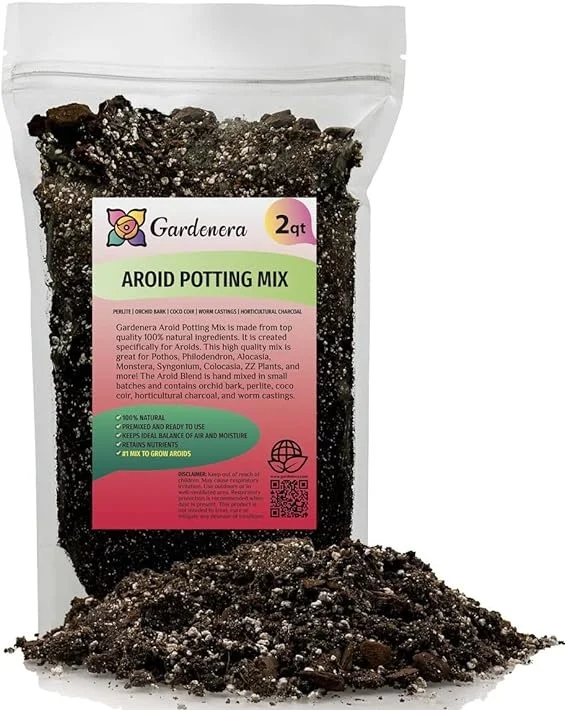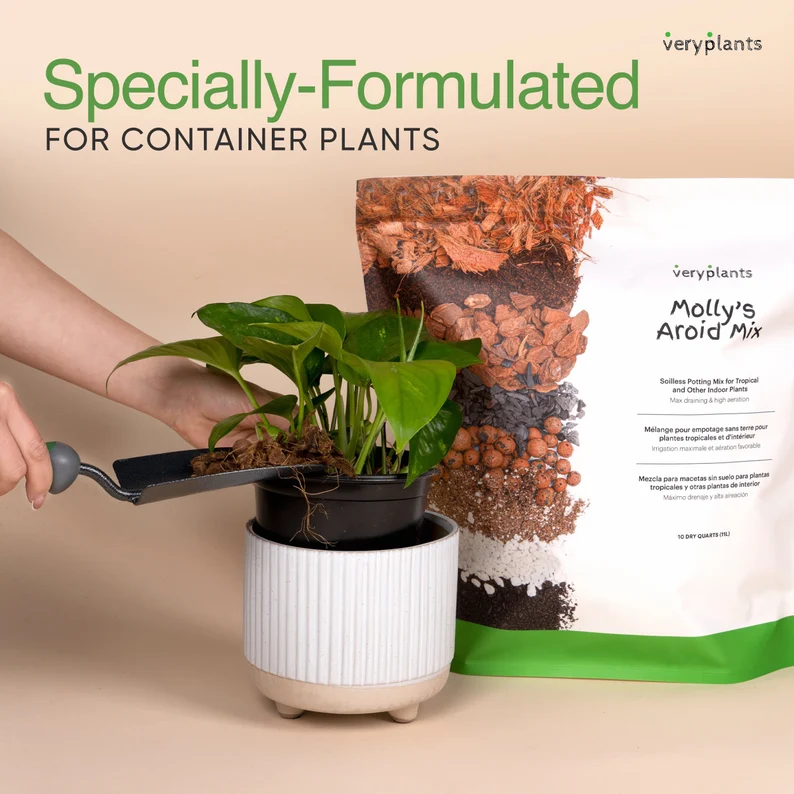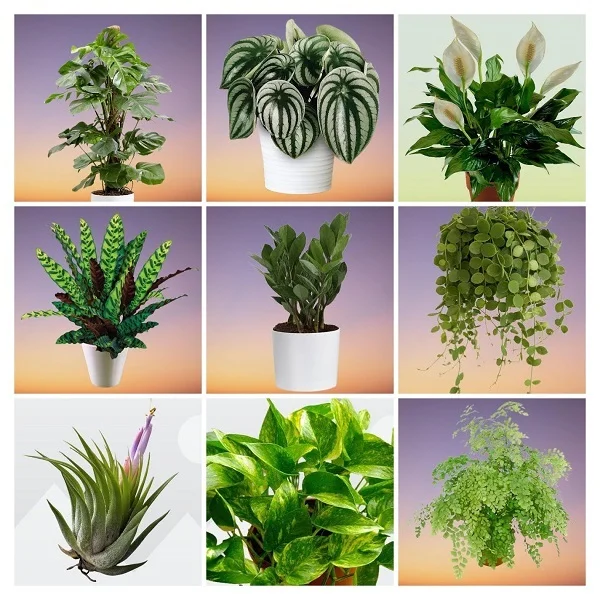How to Grow, Care and Propagate Anthurium vittariifolium
Some links in this post may be affiliate links
Anthurium vittariifolium prefers bright indirect light (dappled light), moderate warmth, humid conditions and moist, rich, chunky aroids potting mix coupled with monthly feeding in the growing season.
Anthurium vittariifolium is among the popular Anthurium varieties with short stems and long, strappy leaves about 2.4 meters long which are clustered at or near the apex of the stem.
Anthurium vittariifolium is a Strap Leaf Anthurium with long, pendulous leaves making it one of the best plants for a hanging baskets tabletop, desktop or pedestal where it can display its beautiful leaves.
Anthurium vittariifolium is similar to Anthurium pallidiflorum but Anthurium pallidiflorum's leaves bear a prominent, light-green mid-rib, are more pointed at the apex and rounded at the base.
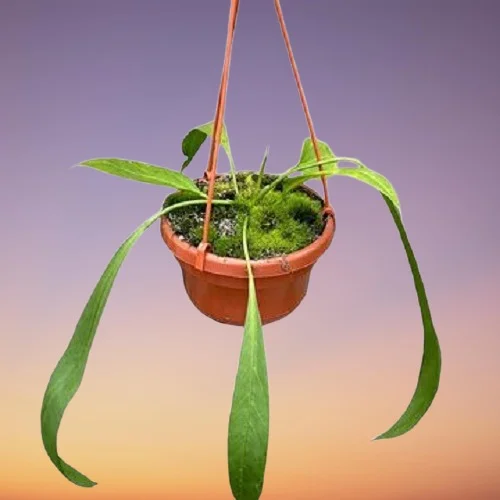
Botanical name: Anthurium vittariifolium
Family: Araceae
Origin
Anthurium vittariifolium is native to the Amazon region; southeast Colombia, Ecuador, Peru, and northern Brazil where it grows deep in the humid rainforests, on the thin layer of forest soil or in cavities between branches of trees.
Flower
Anthurium vittariifolium blooms with small pinkish spathe and spadix and the berries are a bright violet or pink in color. Though it is unlikely to bloom when grown indoors.
Toxicity
Anthurium vittariifolium like other Anthuriums is toxic to both humans and pets. It contain oxalate crystals which can cause digestive distress, breathing problems and skin irritation. Always wear gloves when handling the plants and wash your hands thereafter.
Where to Buy
Are you looking to add Anthurium vittariifolium to your collection? They are available online on Etsy (Link to Etsy).
Anthurium vittariifolium Care Indoors
Anthurium vittariifolium grows best in bright indirect light away from direct sunshine, average warmth of 16-270C, humidity of 60-70% and consistently moist, rich, well-drained aroids potting soil coupled with monthly feeding during the growing season.
Anthurium vittariifolium requires pruning to keep it neat and also discourage pest and disease infestations. Repotting is only needed when it outgrows its current pot. Keep reading for more on these growing conditions and how to provide them.
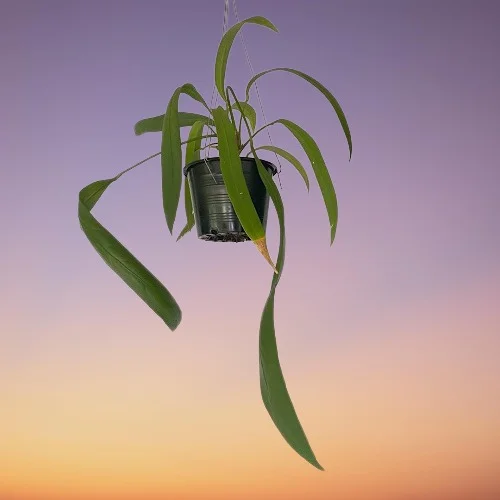
Watering
Water Anthurium vittariifolium thoroughly during the growing season wile allowing the top 1-2 inches of soil to dry out between waterings and keep the soil moist at all times.
Decrease on watering in the cold season as growth is reduce to maintain the soil slightly moist but do not allow the soil to dry out completely.
Ascertain that the pot has a drainage hole to prevent the soil from getting soggy as it can lead to root-rot and eventual plant death.
Light Requirements
Anthurium vittariifolium grows best in bright indirect light away from direct sunlight to avoid scorching leaves.
Anthurium vittariifolium can be grown under grow lights if the natural lighting is not adequate. Take a look at these full spectrum grow lights available on Amazon.
Rotate the pot regularly to ensure that the plant receives light on all sides for uniform growth.
Temperature and Humidity
Anthurium vittariifolium requires an average warmth of 16-270C to thrive. Keep it away from cold drafts to avoid sudden changes in temperature which can cause reduced growth.
Anthurium vittariifolium thrives in high humidity of 60-70%. Elevate humidity by setting the pot on a wet pebble tray or use a cool mist humidifier.
Clean the leaves by damp-wiping with a soft cloth to get rid of dust. Do not leave water drops on the leaves as it may cause fungal infestations.
Fertilizer
Feed Anthurium vittariifolium every 4 weeks during the growing period with a balanced, liquid fertilizer for lush growth. Stop feeding in the cold season as growth is minimal and feeding at this time can lead to fertilizer burn.
Regularly flush out accumulated salts from the soil by running a stream of water through the soil until the water comes out through the drainage hole. Allow it to run for a few minutes and repeat the process several times.
Potting Mix
The best soil for Anthurium vittariifolium should be rich in organic matter and free-draining to prevent it from getting soggy while providing the required nutrients. Most potting mixes designed for aroids are perfect for the plant.
Repotting
Repot Anthurium vittariifolium every 1-2 years at the beginning of the growing season. Use a pot one-size larger and free-draining soil that is rich in organic matter.
Ensure that the pot has a drainage hole to avoid getting soggy soil as it can lead to root-rot and death of the plant. On accout of its pendulous leaves, Anthurium vittariifolium is beautiful in a hanging basket. Check out these macrame plant hanger and self watering pot set on Amazon.
Pruning
Pruning Anthurium vittariifolium is easy. Remove yellow and dead leaves to maintain the plant tidy as well as reduce pest and disease infestations.
Cut the leaves at the base of the stem with a sharp sterlized knife or scissors to avoid unnecessary injuries which can lead to disease infestations. Remove any dead and wayward leaves to maintain the shape of the plant.
Propagation
Anthurium vittariifolium can be propagated during the growing season from from splits by plant divison.
How to propagate Anthurium vittariifolium by plant divison
Water the Anthurium vittariifolium thoroughly at least one day before to make it easier to divide, to hasten establishment and to reduce plant shock.
Take the plant out of its pot and carefully divide it into sections by pulling apart the roots. Ensure each section has adequate roots to hasten establishment.
Select a 6 or 8 inches pot and ensure that the pot has a drainage hole to prevent the soil from getting soggy as it can lead to rotting.
Fill the pot with loose, free-draining potting mix and make a hole in the center of the pot. Ensure that the hole is slightly wider than the root base of the section.
Place the section in the previously made hole and lightly firm the soil around the base while taking care not to bury it too deep; maintain the section at the same soil level it was in the previous pot.
Water the soil thoroughly and place the set up in a well-lit, warm place until the new Anthurium vittariifolium is well established after which you can begin routine care.
Related: How to Propagate Anthurium Plants by 5 Easy Methods
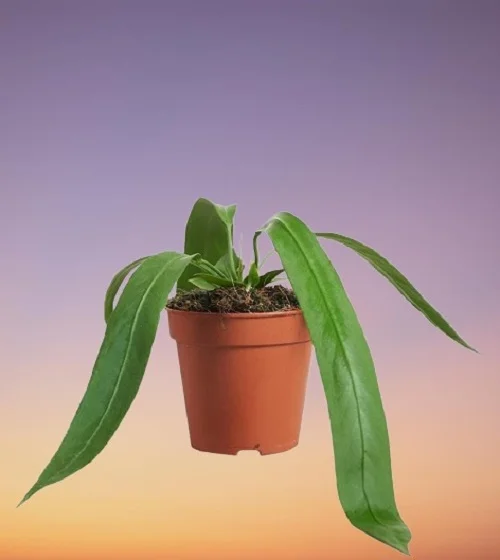
Anthurium vittariifolium Problems
Anthurium vittariifolium problems include brown leaf tips, drooping leaves, pests, diseases, yellow leaves, brown leaf spots among others. Read on for more on these problems, their remedies and solutions.
Pests
The common pests in Anthurium vittariifolium are spider mites, aphids and fungus gnats. Isolate the affected plant to prevent spread to other plants and treat it with neem oil or insecticidal soap as per the manufacturer's instructions.
Diseases
Anthurium vittariifolium is prone to root-rot which is more prevalent in soggy soil. Maintain the soil moist but not soggy by ensuring that the pot has a drainage hole and that the soil is free-draining. Learn how to treat root-rot in houseplants.
Brown leaf tips
Two reasons are responsible for brown leaf tips in Anthurium vittariifolium. One reason for brown leaf tips is too dry air (low humidity). Set the pot on a wet pebble tray or use a cool mist humidifier to increase humidity.
The second reason for brown leaf tips in Anthurium vittariifolium is soggy soil. Maintain the soil moist but not soggy by ensuring that the pot has a drainage hole and that the soil drains easily.
Drooping leaves and stems
There are four causes of drooping leaves and stems in Anthurium vittariifolium. One cause of drooping leaves is low humidity. To increase humidity, set the pot on a wet pebble tray or use a cool mist humidifier.
The second cause of drooping leaves and stems in Anthurium vittariifolium is incorrect watering; either underwatering or overwatering. Maintain the soil moist at all times during the growing season and never allow the soil ball to dry out completely. Read more on how to water houseplants the correct way.
The third cause of drooping leaves and stems in Anthurium vittariifolium is too high temperature due to exposure to direct sunlight. Protect the plant from direct sunlight by filtering the light with a sheer curtain.
The fourth cause of drooping leaves and stems in Anthurium vittariifolium is pests and diseases infestation. Inspect the plant and take control measures for these pests.
Yellow leaves
One of the causes of yellow leaves in Anthurium vittariifolium. One cause of yellow leaves is soggy soil. Maintain the soil moist but not soggy by ensuring that the pot has a drainage hole and that the soil is free-draining.
The second cause of yellow leaves in Anthurium vittariifolium is cold drafts. Keep it away from cold drafts or place it away from windy doors and windows.
Brown leaf spots
The brown leaf spots are sunburn marks caused by exposure of Anthurium vittariifolium to direct sunlight. Move the plant to a shaded place or use a curtain to filter the light.
You liked it? Share on social media.
Related Content
Amazon Associates Disclosure
Homeplantsguide.com is a participant in the Amazon Services LLC Associates Program, an affiliate advertising program designed to provide a means for sites to earn advertising fees by advertising and linking to amazon.com.
